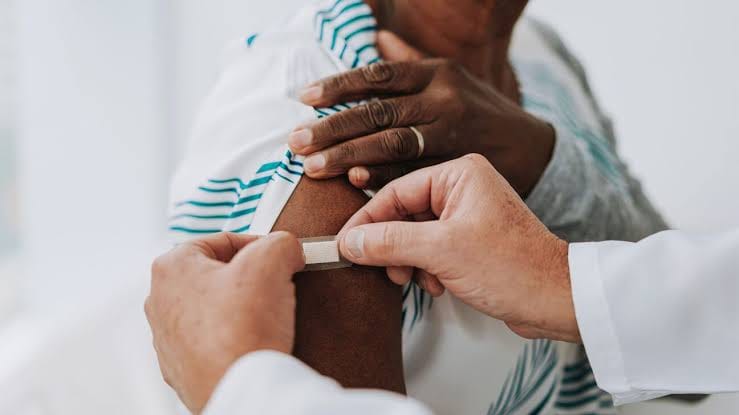In Summary
- Africa’s 2025 GDP topped $2.8T; top 10 economies made up 76%. Nigeria, Egypt, and South Africa led.
- Algeria had the fastest growth at 4.5%, driven by energy exports. Angola rebounded with IMF reforms.
- Ethiopia and Kenya rose with fintech, logistics, and AfCFTA-led service growth.
Deep Dive!!
Lagos, Nigeria – GDP remains one of the most important economic indicators for understanding how a country is performing, but the number alone doesn’t capture the full story. Africa’s richest countries in 2025 are not just generating wealth they are also revealing critical trends about diversification, global trade, and governance. Some countries are consolidating their traditional advantages such as oil or minerals while others are forging new paths through innovation, technology, and investment reforms.
The role of global dynamics, rising energy prices, interest rate hikes, climate shocks, and geopolitical realignments can’t be ignored. Africa’s biggest economies are increasingly integrated into global value chains, making them more exposed to volatility but also more attractive to investors seeking long-term growth in untapped markets. The IMF projects that Sub-Saharan Africa’s economic growth will average 4.0% in 2025, but that figure masks large disparities. What’s clear is that the composition of Africa’s top 10 economies tells a story of both opportunity and caution.
10. Central African Republic

In early 2025, the Central African Republic posted a GDP of approximately $2.81 billion, accounting for 0.1% of Africa’s total economic output. Despite its modest size, the country is mineral-rich, with reserves of gold, diamonds, and uranium yet to be fully exploited.
The government is also engaging in reforms to improve transparency and investor confidence. Programs focused on road development around Bangui, as well as agricultural resilience, aim to reconnect the country to regional markets. Although still fragile, the CAR’s slow progress offers signs of economic recovery, driven by natural endowments and multilateral support.
9. Cape Verde
Cape Verde, a small island nation off the West African coast, registered a GDP of $2.72 billion in 2025, also contributing 0.1% to Africa’s total. But what it lacks in size, it makes up for in strategic planning. Its economy is powered by tourism, services, and digital connectivity, all supported by sound governance, stable democratic institutions, and a strong diaspora network.
In recent years, Cape Verde has invested heavily in renewable energy, aiming to reach 50% clean energy generation by 2030. Its emphasis on education, healthcare, and digital transformation has attracted EU partnerships and green financing deals. The country’s blue economy and eco-tourism sectors are being positioned as sustainable growth engines in a climate-sensitive future.
8. Burundi
Burundi’s GDP in 2025 stands at $3.08 billion, making up 0.11% of the continent’s economy. Heavily reliant on agriculture, the country is making steady progress in post-conflict reconstruction. Coffee and tea remain Burundi’s top exports, with government reforms in these sectors aimed at improving quality and access to international markets.
New rural electrification projects and logistics investments, backed by regional partners and institutions like COMESA, are also helping Burundi lay the groundwork for growth. Though challenges like political tensions and food insecurity persist, the country’s macroeconomic indicators such as reduced inflation and better fiscal discipline point toward cautious optimism.
7. Chad
With a GDP of $18.70 billion in early 2025, Chad contributes about 0.66% of Africa’s economic output. Its economy remains dominated by oil, which accounts for over 60% of government revenues. However, recent efforts have sought to diversify growth by investing in livestock, renewable energy, and cross-border trade with Sudan, Cameroon, and Nigeria.
Chad’s geographic position and participation in the Central African Economic and Monetary Community (CEMAC) provide some leverage in regional trade, but infrastructure and security limitations hold it back. That said, the country has seen increased Chinese investment in oil pipelines and refining, which could boost revenue if managed well.
6. Benin
Benin entered 2025 with a GDP of $21.37 billion, comprising about 0.76% of Africa’s total economic output. The country has steadily built itself into a vital trade corridor, thanks to infrastructure upgrades at the Port of Cotonou and new transport routes to Niger and Burkina Faso. Cotton continues to be the major export, but the government has focused on diversifying into light manufacturing and agri-processing.
Recent reforms have targeted customs digitalization, public sector transparency, and incentives for SMEs. The introduction of digital ID systems and tax reforms has improved public service delivery and revenue collection. With political stability, good fiscal management, and a pro-business climate, Benin is positioning itself as a gateway economy for the Sahel.
5. Burkina Faso
Burkina Faso recorded a GDP of $21.90 billion in early 2025, representing about 0.78% of Africa’s total GDP. Despite ongoing security challenges in its northern and eastern regions, the country has continued to grow through its resilient agriculture sector and expanding gold mining industry. Gold now accounts for over 70% of the country’s export revenue, driven by both industrial mining and artisanal operations.
Recent partnerships with Canadian and Australian firms have boosted investments in the mining sector, while donor support and regional cooperation have helped stabilize parts of the economy. The government has also launched programs to modernize farming techniques, improve irrigation, and expand access to rural credit. While insecurity remains a concern, Burkina Faso’s economic fundamentals including a young population, abundant resources, and regional trade links point to potential for inclusive growth.
4. Botswana
Botswana’s economy reached $21.42 billion in GDP for early 2025, accounting for approximately 0.76% of Africa’s total output. Known for its political stability, prudent macroeconomic policies, and transparent governance, Botswana continues to stand out in Southern Africa. The diamond sector remains the backbone of its economy, but recent moves toward diversification are gaining traction.
Tourism, financial services, and green energy are rising sectors in Botswana’s economic roadmap. The government has attracted attention for its investment in infrastructure and efforts to digitize public services. With low levels of public debt, strong foreign reserves, and a supportive business environment, Botswana remains one of the continent’s most fiscally responsible and investor-friendly economies.
3. Cameroon
Cameroon posted a GDP of $53.20 billion in 2025, which gives it a 1.89% share of Africa’s GDP. The country is an economic heavyweight in Central Africa due to its diverse economy spanning agriculture, energy, forestry, mining, and services. Oil and gas continue to play a key role, especially with the government’s renewed offshore drilling contracts and LNG export deals.
Cameroon’s infrastructure development particularly in roads, ports, and energy is being driven by Chinese partnerships and regional integration programs. The government’s efforts to enhance its fiscal discipline and manage inflation have contributed to overall stability, although political tensions in the Anglophone regions remain a drag on investor confidence. Nevertheless, Cameroon’s central location, resource base, and large domestic market make it a key player in regional trade and development.
2. Angola
With a GDP of $92.12 billion, Angola ranks second in Africa’s 2025 economic standings, representing 3.27% of the continent’s GDP. The country has undergone significant transformation over the past decade, moving from an oil-dominated economy to one actively pursuing diversification. While oil still contributes heavily to national revenues, investments in agriculture, fisheries, and manufacturing are growing steadily.
The Luanda government has implemented aggressive privatization and reform programs, supported by the IMF and World Bank. It has also made strides in debt restructuring and reducing inflation. Angola’s infrastructure has seen marked improvements, particularly in energy access and transport networks, helping to unlock potential in rural areas. Its economic rebound is further bolstered by political reforms and efforts to fight corruption, boosting international investor confidence.
1. Algeria
Algeria remains Africa’s richest country in early 2025, with a commanding GDP of $266.78 billion, making up 9.47% of the continent’s total economic output. A hydrocarbon giant, Algeria continues to benefit from high global oil and gas prices, with hydrocarbons accounting for nearly 95% of export earnings and 60% of government revenues. But unlike in previous decades, the government is now heavily investing in non-oil sectors.
Major industrial zones, renewable energy projects, and investments in technology are part of Algeria’s national plan to reduce reliance on oil and gas. The country has also expanded trade with Europe and China while deepening ties within the African Continental Free Trade Area (AfCFTA). With foreign reserves exceeding $90 billion and inflation under control, Algeria is positioning itself as not just a resource-rich state, but a potential manufacturing and energy hub for North Africa and beyond.
https://www.africanexponent.com/top-10-african-countries-with-the-highest-prevalence-of-hiv-aids-in-2025/


